I don't quite understand what {subset} stands for when it comes to the association between class diagrams in UML. I've found this PDF that talks about it on page 4: https://citeseerx.ist.psu.edu/viewdoc/download?doi=10.1.1.138.5537&rep=rep1&type=pdf. Here is the diagram & text that you can also find on page 4:
I read this and I'm not 100% about what {subsets < class > } is about. It says that "The slot representing d will be a subset of the slot representing b. Elements of type B can be inserted into slot b and elements of type D can be inserted into slots b and d." So, is {subset} some kind of polymorphism ? I think that thorugh "slot" they mean like the argument of a method that is of type B. And because D subsets b that means that D is like the sub-class of b so it can be passed down as "b" in arguments because of Polymorphism.
So the question is : What is {subsets < class > } exactly, is it representing a sub class ?
On top of that I have other questions: What are {union}, {redefines < class > }, {nonunique} & {sequence}. What do does stand for ?
Some examples in code would make it easier to understand.

